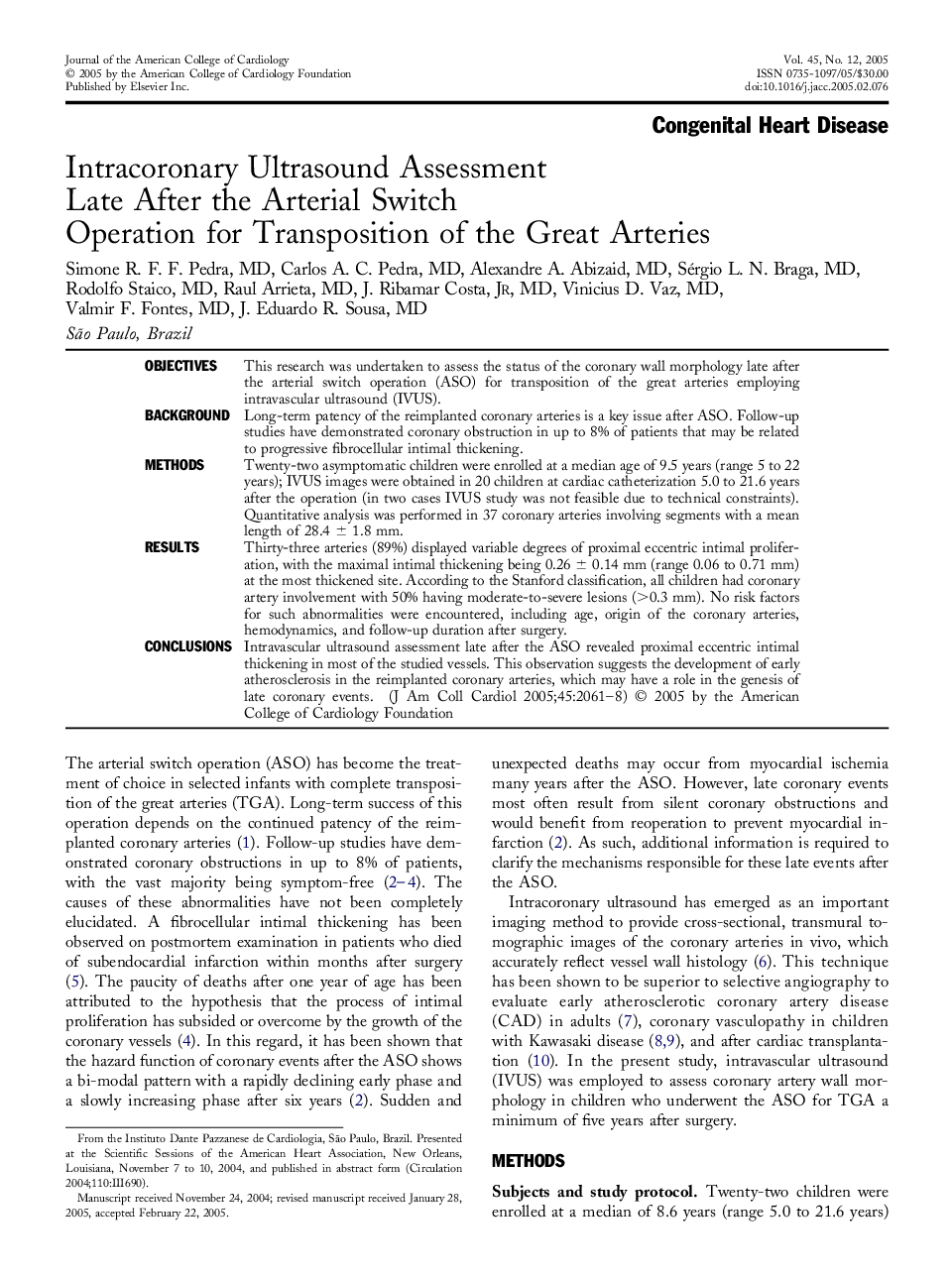| Article ID | Journal | Published Year | Pages | File Type |
|---|---|---|---|---|
| 2954529 | Journal of the American College of Cardiology | 2005 | 8 Pages |
ObjectivesThis research was undertaken to assess the status of the coronary wall morphology late after the arterial switch operation (ASO) for transposition of the great arteries employing intravascular ultrasound (IVUS).BackgroundLong-term patency of the reimplanted coronary arteries is a key issue after ASO. Follow-up studies have demonstrated coronary obstruction in up to 8% of patients that may be related to progressive fibrocellular intimal thickening.MethodsTwenty-two asymptomatic children were enrolled at a median age of 9.5 years (range 5 to 22 years); IVUS images were obtained in 20 children at cardiac catheterization 5.0 to 21.6 years after the operation (in two cases IVUS study was not feasible due to technical constraints). Quantitative analysis was performed in 37 coronary arteries involving segments with a mean length of 28.4 ± 1.8 mm.ResultsThirty-three arteries (89%) displayed variable degrees of proximal eccentric intimal proliferation, with the maximal intimal thickening being 0.26 ± 0.14 mm (range 0.06 to 0.71 mm) at the most thickened site. According to the Stanford classification, all children had coronary artery involvement with 50% having moderate-to-severe lesions (>0.3 mm). No risk factors for such abnormalities were encountered, including age, origin of the coronary arteries, hemodynamics, and follow-up duration after surgery.ConclusionsIntravascular ultrasound assessment late after the ASO revealed proximal eccentric intimal thickening in most of the studied vessels. This observation suggests the development of early atherosclerosis in the reimplanted coronary arteries, which may have a role in the genesis of late coronary events.
